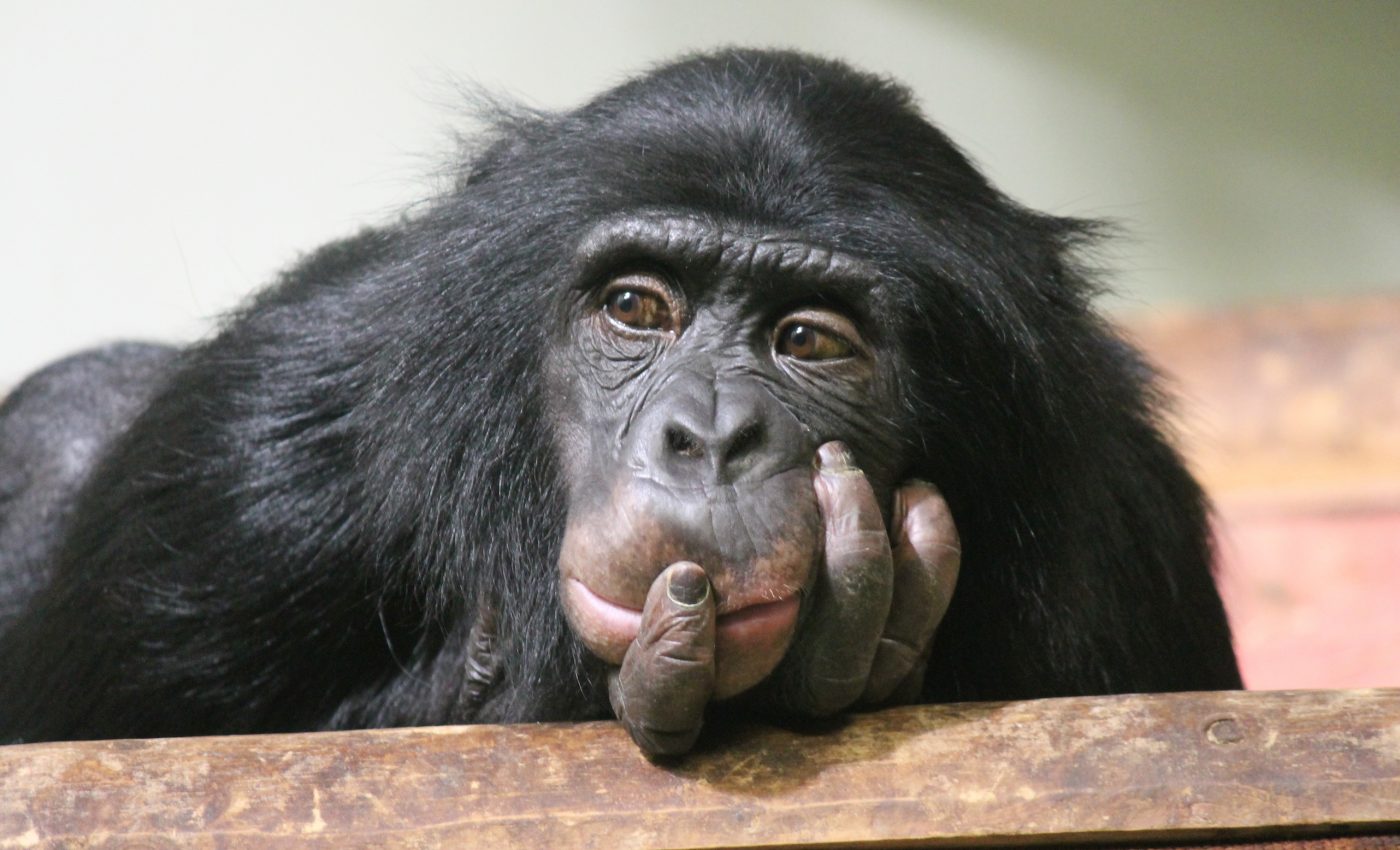
Great apes can understand the complex mental states of others
For decades, scientists have debated whether nonhuman species may possess the ability to understand the mental states of others. A new study suggests that our close evolutionary relatives – great apes such as chimpanzees and orangutans – have a theory of mind which allows them to acknowledge the beliefs, emotions, intentions, and desires of themselves and others.
A study by Fumihiro Kano of Kyoto University, in collaboration with experts at the Kumamoto Sanctuary and Primate Research Institute, the Max-Planck Institute for Evolutionary Anthropology, and the University of St Andrews, had previously demonstrated that great apes can anticipate a human’s actions. This research produced the strongest evidence to date that great apes possess a theory of mind.
“We initially created a movie based on an established psychological test – especially exciting for apes – and combined this with eye-tracking technology to record gaze patterns indicating anticipation of an agent’s behavior based on an understanding of the agent’s false belief,” said Kano.
The experiment revealed that the apes understood when a human had a false belief about the location of an object. The apes appeared to demonstrate the ability to anticipate the individual’s actions while searching for the object, which had often been translocated.
However, it was possible that the apes did not genuinely understand the person’s false belief, but instead relied on specific rules about the individual’s behavior. To investigate, the team applied new conditions to the experiment, in which the apes were exposed to either a “true” barrier made of an opaque material, or to a “trick” barrier that appears to be opaque from a distance but becomes transparent up close.
In a new video shown to the apes, an agent can be seen hiding behind a barrier while an object is translocated to the front of it. The barrier is identical in appearance to the ones given to the apes, which allowed the researchers to evaluate whether the two groups of apes could infer the agent’s ability or inability to see through the barrier based on their own experiences.
The team observed that, with the opaque barrier, the apes anticipated that the agent would go to the location that was last seen. With the trick barrier, the apes anticipated that the agent would not go to either location because the object had been removed entirely.
According to the researchers, their findings ruled out a simple behavioral explanation because the two groups of apes anticipated the agent’s behavior based on what they had encountered themselves.
“We are excited to find that great apes actually passed this difficult test,” said Kano. “The results suggest that we share this ability with our evolutionary cousins. We plan to continue refining our methods to test further non-mentalistic alternatives to the theory of mind in nonhuman animals.”
The study is published in the Proceedings of the National Academy of Sciences.
—
By Chrissy Sexton, Earth.com Staff Writer
Image Credit: Shutterstock/Lorna Roberts













